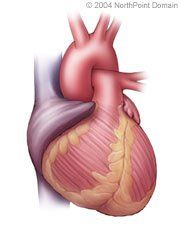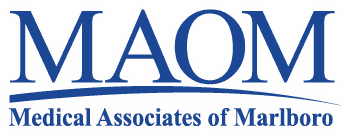Nuclear Imaging
Basic Facts
- During nuclear imaging, physicians inject a small amount of a radioactive isotope, called a tracer, into a person's bloodstream.
- Cameras record the distribution of the isotope through the bloodstream and heart muscle and produce images of the heart that help physicians evaluate heart function or locate exactly where the heart muscle may not be receiving enough blood.
- The radioactive isotopes used in nuclear imaging lose their radioactivity quickly and typically pass from the body within 24 hours.

One way in which a physician diagnoses coronary heart disease is through nuclear imaging. During nuclear imaging, a small dose of a radioactive isotope is injected into the bloodstream. The radioisotope, or tracer, is carried through the bloodstream and into the myocardium, or heart muscle. Special cameras detect the radiation released from the tracers and record information about the heart muscle and blood flow. This information is then used to produce images of the heart on a computer screen or film.
The different types of nuclear imaging include:
- Myocardioal perfusion scan, used to evaluate blood flow; and
- Radionuclide ventriculography, which measures ejection fraction, stroke volume, and cardiac output.
PRE-TEST GUIDELINES
Patients are advised to avoid the following prior to nuclear imaging:
- Eating and drinking;
- Smoking;
- Drinking alcohol;
- Drinking caffeinated beverages; and
- Taking nonprescription medications.
In some instances, patients may be asked to discontinue a prescription medication.
WHAT TO EXPECT
Nuclear imaging is done in a hospital or an outpatient healthcare facility. An electrocardiogram is usually taken before nuclear imaging begins. An IV, or intravenous catheter, is placed in the arm to administer the tracer. The patient lies on his or her back on a padded table under a camera. A small amount of tracer is injected into the catheter, and then the camera moves, capturing images at different angles or rotating slowly around the patient.
Nuclear imaging scans may be completed in less than 1 hour, but may take up to 4 hours.
POST-TEST GUIDELINES
Patients are instructed to drink fluids to help flush the radioactive tracer.
Copyright © 2017 NorthPoint Domain, Inc. All rights reserved.
This material cannot be reproduced in digital or printed form without the express consent of NorthPoint Domain, Inc. Unauthorized copying or distribution of NorthPoint Domain's Content is an infringement of the copyright holder's rights.
